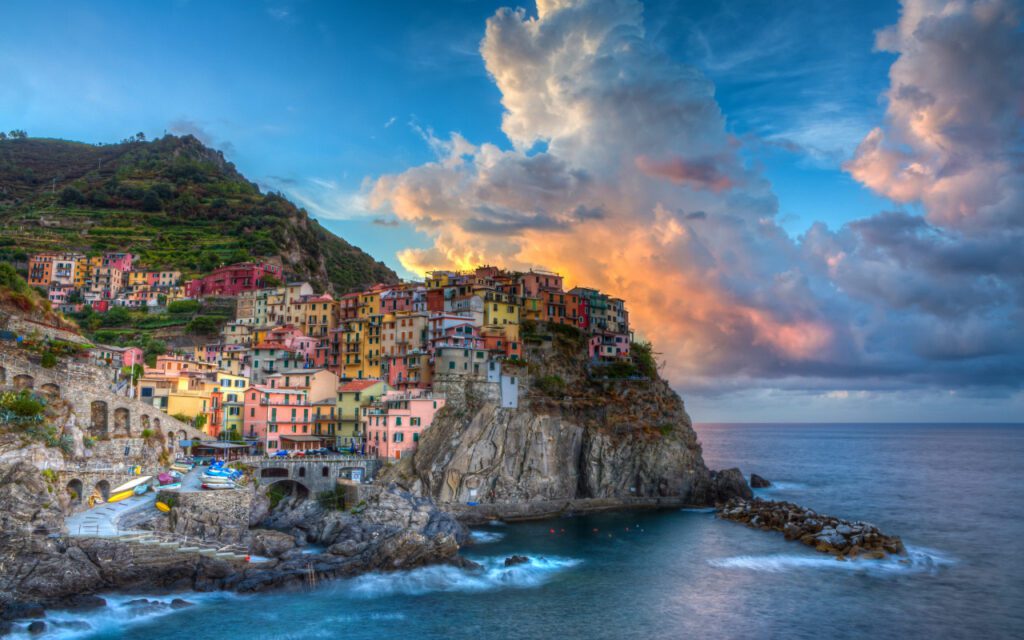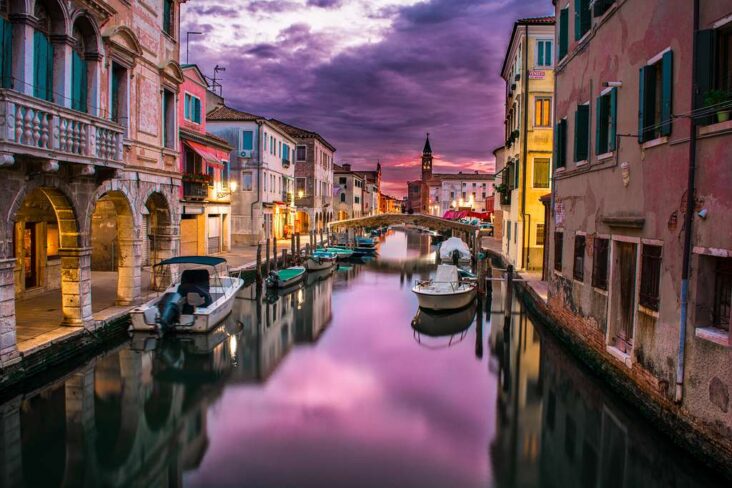There’s something magical about stepping off a train in a new Italian city, with nothing but your backpack and a sense of adventure. I still remember my first solo journey through Italy—getting lost in Venice’s winding streets, stumbling upon a hidden trattoria in Florence, and making friends with locals in a small Sicilian town. Solo travel in Italy offers a unique blend of freedom, self-discovery, and immersion in one of the world’s most beloved cultures. How to Travel Solo in Italy
Whether you’re dreaming of wandering through ancient ruins, savoring authentic pasta at a streetside café, or simply soaking in breathtaking coastal views, Italy provides the perfect backdrop for a solo adventure. This comprehensive guide will equip you with everything you need to plan an unforgettable solo trip to Italy, from practical logistics to safety tips and destination recommendations.

Planning Your Trip
Defining Your Travel Style and Interests
Before packing your bags, take some time to reflect on what you want from your Italian adventure. Italy offers something for every type of traveler:
- Culture and History Enthusiasts: Focus on Rome, Florence, and Naples for museums, archaeological sites, and architectural wonders.
- Food and Wine Lovers: Prioritize Bologna, Piedmont, or Tuscany for culinary experiences and vineyard tours.
- Outdoor Adventurers: Head to the Dolomites, Cinque Terre, or Sardinia for hiking, swimming, and natural beauty.
- Relaxation Seekers: The Amalfi Coast, Puglia, or Lake Como offer perfect settings for slower-paced travel.
Solo travel in Italy gives you the freedom to design an itinerary that perfectly matches your interests without compromising. Make a list of your must-see places and experiences, and let these guide your planning process.
Best Time to Visit
The timing of your solo trip to Italy can significantly impact your experience:
| Season | Pros | Cons | Best For |
|---|---|---|---|
| Spring (April-May) | Moderate temperatures, blooming countryside, fewer crowds | Occasional rain | Photography, exploring cities, countryside tours |
| Summer (June-August) | Beach weather, extended daylight hours, vibrant atmosphere | Crowded, expensive, hot | Coastal areas, swimming, festivals |
| Fall (September-October) | Harvest season, pleasant weather, fewer tourists | Shorter days | Food and wine experiences, hiking |
| Winter (November-March) | Lowest prices, authentic local experiences, Christmas markets | Cold weather, reduced hours at attractions | Budget travel, skiing in the north, major cities |
For solo travelers, shoulder seasons (May, September, and October) often provide the ideal balance of good weather, manageable crowds, and reasonable prices.
Notable Festivals for Solo Travelers:
- Venice Carnival (February)
- Infiorata flower festivals (May-June)
- Siena’s Palio horse race (July and August)
- Alba White Truffle Festival (October-November)
Crafting an Itinerary
When planning a solo journey through Italy, balance must-see attractions with flexibility for spontaneous discoveries. Here are sample itineraries to inspire you:
1-Week Classic Italy:
- Days 1-2: Rome (Colosseum, Vatican, Trastevere)
- Days 3-4: Florence (Uffizi Gallery, Duomo, Ponte Vecchio)
- Days 5-7: Venice (St. Mark’s Square, Doge’s Palace, Murano/Burano)
2-Week Northern Italy:
- Days 1-3: Milan & Lake Como
- Days 4-6: Cinque Terre
- Days 7-9: Bologna & Parma
- Days 10-11: Verona
- Days 12-14: Venice & islands
2-Week Southern Italy:
- Days 1-3: Naples & Pompeii
- Days 4-7: Amalfi Coast (Sorrento, Positano, Capri)
- Days 8-10: Puglia (Bari, Alberobello, Polignano a Mare)
- Days 11-14: Sicily (Palermo, Taormina, Syracuse)
Getting from place to place is straightforward with Italy’s excellent train network. For example, Rome to Florence takes just 1.5 hours on a high-speed train, while Florence to Venice is about 2 hours. Book tickets in advance through Trenitalia or Italo for the best prices.
Pro Tip: As a solo traveler, don’t pack your itinerary too tightly. Allow time to wander, relax in piazzas, and follow unexpected opportunities—these often become the most memorable experiences!
Budgeting for Your Trip
Italy can accommodate various budget levels. Here’s a breakdown of what to expect:
Daily Budget Guidelines:
- Budget: €60-80 (hostel dorms, street food and grocery shopping, public transport, free/budget attractions)
- Mid-range: €100-150 (private rooms in B&Bs, casual restaurants, paid attractions)
- Luxury: €200+ (boutique hotels, fine dining, private tours)
Money-Saving Tips for Solo Travelers:
- Purchase city passes in major destinations like Rome or Florence
- Eat your main meal at lunch when prices are lower (look for “menu del giorno”)
- Stay in accommodations with kitchen access
- Take advantage of free museum days (often the first Sunday of the month)
- Book train tickets in advance for discounts up to 60%
Getting Around Italy
Transportation Options
Italy offers excellent public transportation, making it ideal for solo travel:
Trains:
- High-speed trains (Frecciarossa, Italo): Connect major cities quickly but require reservations
- Regional trains: More affordable but slower; no reservations needed
- Tips: Download the Trenitalia app, validate your ticket before boarding regional trains
Buses:
- Intercity buses (FlixBus, MarinoBus): Often cheaper than trains for longer routes
- Local buses: Great for reaching smaller towns and villages
- Tips: Purchase tickets at tobacco shops or newsstands before boarding
Car Rental:
- Best for exploring rural areas like Tuscany or Puglia
- Challenging in cities due to restricted driving zones (ZTL)
- International driver’s permit required
- Consider picking up/dropping off at airports to avoid city driving
Internal Flights:
- Worth considering for long distances (e.g., Rome to Sicily)
- Airlines include Alitalia, Ryanair, and EasyJet
Navigation Tips
- Essential Apps: Google Maps, Moovit (for public transit), TrenItalia or Omio (for train bookings)
- City Transportation Cards: Most major cities offer 24/72 hour passes for unlimited travel
- Taxi Safety: Always use official taxis from designated stands or apps like FreeNow or MyTaxi
- Walking: Many Italian city centers are compact and best explored on foot
Accommodation for Solo Travelers in Italy
Types of Accommodation
Hostels:
- Perfect for meeting fellow travelers
- Often offer social activities and tours
- Cost: €20-35 for dorms, €50-80 for private rooms
- Recommended chains: Ostello Bello, The Yellow
Hotels:
- Boutique hotels offer personalized service ideal for solo travelers
- 3-star hotels provide good value (€70-120 per night)
- Look for properties that include breakfast
Airbnb and Apartments:
- Provide local neighborhood experience and kitchen facilities
- Studio apartments range from €50-100 per night
- Great for longer stays
Agriturismi (Farm Stays):
- Unique rural accommodations with home-cooked meals
- Wonderful for solo travelers seeking authentic experiences
- Usually require a car to reach
Tips for Choosing Accommodation
For solo travelers in Italy, location and safety are paramount:
- Stay in central, well-lit areas with good public transportation connections
- Read reviews specifically from other solo travelers
- Look for properties with 24-hour reception for late arrivals
- Check if breakfast is included (great way to start the day without searching for a café)
- Consider bathroom arrangements if staying in hostels (some offer female-only bathrooms)
Safety and Security
Common Scams and How to Avoid Them
Italy is generally safe, but be aware of these common scams targeting tourists:
- Pickpocketing: Particularly common on crowded public transportation and tourist sites
- Fake petitions/distractions: Someone asks you to sign something while an accomplice steals your belongings
- Unofficial taxi drivers: Offering “special rates” outside stations and airports
- Overpriced tourist menus: Restaurants with menu tourists (usually multilingual) in main squares
Prevention strategies:
- Use anti-theft bags and money belts
- Keep valuables in front pockets or internal zipped compartments
- Be extra vigilant in crowded areas and on public transportation
- Research typical costs beforehand to recognize inflated prices
Staying Safe as a Solo Traveler
- Share your itinerary with someone at home
- Avoid walking alone in unfamiliar areas late at night
- Trust your instincts—if something feels wrong, remove yourself from the situation
- Use location sharing with trusted friends when exploring remotely
- Learn basic Italian phrases for emergencies
Emergency Contacts and Resources
- Emergency Numbers: 112 (general emergency), 118 (medical), 113 (police)
- Tourist Police: Available in major tourist destinations, officers speak English
- Embassy/Consulate: Know the location of your country’s nearest diplomatic mission
- Pharmacies (Farmacie): Identified by green crosses, can help with minor medical issues
Travel Insurance
Comprehensive travel insurance is essential for solo travelers. Look for policies covering:
- Medical emergencies and evacuation
- Trip cancellation/interruption
- Lost or stolen belongings
- COVID-related coverage
- 24/7 assistance services
Meeting People and Connecting with Locals
Strategies for Making Friends
Solo travel doesn’t mean being alone unless you want to be:
- Free Walking Tours: Great for meeting other travelers and learning from local guides
- Cooking Classes: Share a memorable experience while learning to make Italian specialties
- Language Exchange Meetups: Use apps like Meetup or Tandem to find local gatherings
- Day Tours: Wine tours, food tours, and excursions attract like-minded travelers
- Aperitivo Hours: Many bars offer pre-dinner drinks with snacks—perfect for socializing
Engaging with Italian Culture
- Language: Learn these basic phrases:
- “Buongiorno” (Good day)
- “Grazie” (Thank you)
- “Parla inglese?” (Do you speak English?)
- “Il conto, per favore” (The bill, please)
- “Dove si trova…?” (Where is…?)
- Dining Etiquette:
- Dinner typically starts around 8pm
- Cover charges (coperto) are standard
- Tipping is appreciated but not expected (5-10% is generous)
- Ask for “tavolo per uno” (table for one)
- Cultural Respect:
- Dress modestly when visiting churches (shoulders and knees covered)
- Keep voice levels down in public spaces
- Learn the local greeting customs (cheek kisses vary by region)
Top Destinations for Solo Travelers in Italy
Rome
Why it’s great for solo travelers: Endless sights, excellent public transportation, and plenty of other travelers to meet.
Don’t miss: The Colosseum, Vatican Museums, Trastevere neighborhood, Roman Forum
Solo-friendly accommodations: The Yellow Hostel, Generator Rome, Hotel Artemide
Safety tip: Be vigilant around Termini Station, especially at night
Florence
Why it’s great for solo travelers: Walkable historic center, amazing art, and organized tours to nearby regions.
Don’t miss: Uffizi Gallery, Duomo climb, Boboli Gardens, sunset at Piazzale Michelangelo
Solo-friendly accommodations: Hostel Archi Rossi, Hotel Davanzati, Plus Florence
Hidden gem: Appreciate Renaissance art without crowds at Bargello Museum
Venice
Why it’s great for solo travelers: Perfectly safe for wandering, unique atmosphere, and impossible to get truly lost (you’re on an island!).
Don’t miss: St. Mark’s Square, Doge’s Palace, island hopping to Murano and Burano
Solo-friendly accommodations: Generator Venice, We_Crociferi, Hotel Antiche Figure
Solo dining tip: Try cicchetti (Venetian tapas) at bacari wine bars—perfect for solo diners
Cinque Terre
Why it’s great for solo travelers: Hiking opportunities, beautiful scenery, and relaxed atmosphere.
Don’t miss: Hiking the Blue Path, swimming at Monterosso beach, sunset dinner in Manarola
Solo-friendly accommodations: Ostello Tramonti, 5 Terre Backpackers, Hotel Villa Steno
Safety tip: Some hiking trails can be strenuous—ensure you have proper footwear and water
What to Pack
For solo travel in Italy, pack light and versatile:
- Clothing:
- Comfortable walking shoes (Italian cobblestones are beautiful but unforgiving)
- Layers for variable weather
- One nicer outfit for restaurants or special occasions
- Modest clothing for church visits
- Essentials:
- Universal power adapter with USB ports
- Portable phone charger
- Refillable water bottle (you can use public fountains throughout Italy)
- Small daypack with secure zippers
- Travel first aid kit with basic medications
- Documents:
- Passport (with photocopies stored separately)
- Travel insurance information
- Printed accommodations confirmations
- International driver’s permit (if planning to drive)
Conclusion
Solo travel in Italy offers a journey of self-discovery against a backdrop of incomparable beauty, history, and culinary delights. From wandering ancient ruins to sipping espresso in charming piazzas, the experiences you’ll have traveling solo through Italy will stay with you long after you return home.
The freedom to follow your own interests, connect with locals and fellow travelers, and navigate challenges independently creates a sense of accomplishment that’s uniquely rewarding. Whether you’re a first-time solo traveler or a seasoned adventurer, Italy welcomes you with open arms and endless possibilities.
Now that you’re equipped with practical tips for solo travel in Italy, it’s time to take the leap and start planning your Italian adventure. Which region will you explore first? Share your plans in the comments below, or sign up for our newsletter for more Italy travel inspiration and advice!
Buon viaggio!


